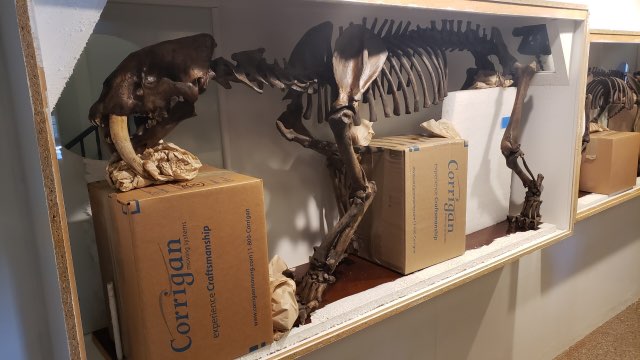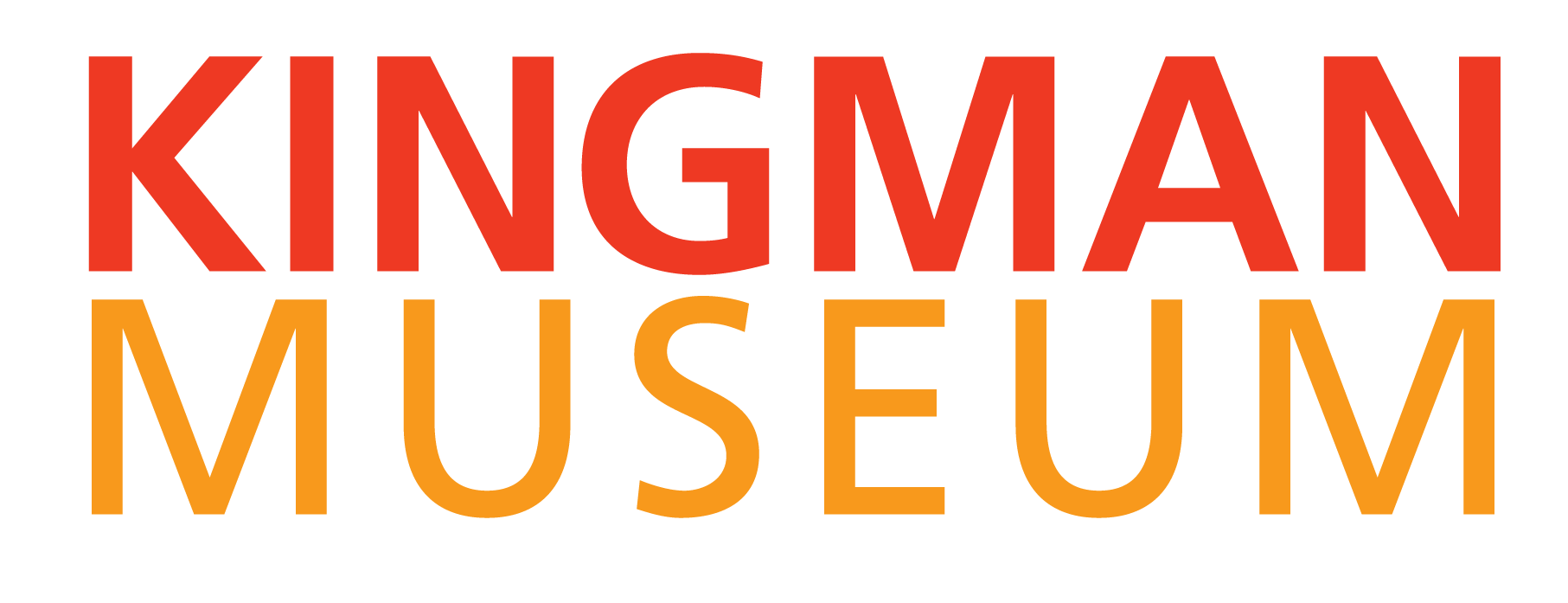Case Study: Kingman Museum
Undertaking:
- Gracefully pack, transport and deliver all contents and collections of the Kingman Museum to a climate-controlled warehouse for long-term storage
- Limited crew and volunteers ready to contribute due to coronavirus restrictions
- Meticulously catalog each item throughout move process
Objective:
- Safely guard and relocate museum exhibits
- Make certain all elements are properly protected for extended storage
- Interface with museum curators to ensure pieces are transported in the best possible way
Project Scope:
- Custom handling and crating for one-of-a-kind, rare, delicate and valuable museum artifacts
- Relocation of all artifacts to warehouse storage maintained by the museum
- Protect items against any humidity or distressing conditions while in storage
Solution:
“You have to know your customer,” said Steve Wayward, while recalling his adventure working with the Kingman Museum. “Their team approached Corrigan when they decided to relocate their entire museum. They heard of our reputation, and how we’ve provided successful solutions for other museums in the region. Following a conversation with them, I knew exactly what we could do for them, and I’m certain they knew right away, as well. Sometimes it is the first interaction that indicates the partnership is a good fit. In our case, it was.”
As the Director of Commercial Projects, Steve has been involved with a number of of museum moves, although, this museum move was a little different from all previous projects. “They possess an incredibly eclectic collection,” explained Wayward. “There’s anything and everything from Native American relics to taxidermy. Working with such a extensive range of items proved to be an intriguing challenge for us, so we had to clearly collaborate with the staff of experts at the museum. They understand their artifacts better than anyone, and this was certainly an occasion where our team relied on them for insights into the best way to proceed. Given their intimate understanding, we were able to provide solutions for moving the museum. That alliance proved to be fundamental to this move being a success.”

The collaborative spirit of this move began immediately. After the museum received the moving quote, Steve worked directly with them to recognize projects that the museum staff could pack on their own. However, with Covid-19 restrictions, that meant a limited number of volunteers and employees were available to assist. “Inspiring them with the right knowledge and resources helped them to line up the scope of services with their budget”, stated Steve. “We provided the technical expertise, tools, resources and materials. They provided the artifact insights and packing labor for a good portion of the museum move. Everything worked well, not only keeping them within their budget, but their staff was so knowledgeable, we couldn’t have packed some items any finer. With the right resources and knowledgeable people in place, you can achieve so much with a small group. In the end, by their staff assisting, they reduced their quote by nearly half. They were amazing.”
Subsequent to further collaboration, a an unrushed pace was agreed upon. Often, commercial moves are entirely packed, then relocated to their assigned destination. In this case, packing and then moving individual areas of the museum, piece by piece, proved to be the ideal method. During the period of four weeks, Corrigan had three employees on site every day to work along with the Kingman team. Moving scrupulously through the storage areas and exhibits, each section was packed and moved relocated before moving onto the next section.
Brian Stickler, warehouseman for the Corrigan Grand Rapids branch, was one of the Corrigan crew members on site for this project. “Most museums do not permit you to touch their artifacts, so this was a really unique opportunity. It’s not common that you can touch the real taxidermy of a polar bear,” he explained. “It was also a fun opportunity to see and handle the pieces in the museum storage and archives. These were items off exhibit that the general public could not view.”
The most exciting item handled during the relocation: “A saber-tooth tiger from the original excavation of the LaBrea Tar Pits,” said Stickler. “It took a few minutes to identify the most favorable solution to support and carefully handle it. Its skeleton is mounted inside of an open-front display case. Our plan was to place book boxes under her for support, and then pad around and underneath its teeth with paper. We finished by surrounding the display in foam and placed it inside of a sofa carton. We used the same process for a dire wolf skeleton, and they both were moved perfectly.”

However, not all artifacts were that significant in size though. What amounted to be one of the biggest challenges collections to move actually included some of the smaller items. Within a storage cabinet laid nearly 20 trays of all kinds of animal eggs. “There were large ostrich eggs as well as eggs about the size of a dime. We wore gloves of course, but those were probably some of the most fragile items I’ve ever moved,” noted Stickler.
How is it that you move such a delicate and fragile collection? “At about 5 mph,” laughed Stickler. “First we carefully laid down protective material and pad inside the truck. Then we placed each tray of eggs flat inside. We had two crew members in personal cars, escorting our semi-truck with their flashers on. Similar to a processional, going literally 5 miles an hour from the museum to the warehouse storage location. It was jumpy over every small bump, but every specimen was securely relocated.”
From rocks, minerals, fossils, meteorites, taxidermy and everything along the way, every single article needed to be meticulously organized for the museum records. “Believe it or not, that proved to be the predominant challenge of,” said Stickler. “We kept precise records of every item moved, what it was packed or wrapped in, and the final location inside of the storage warehouse. Because the museum is storing all belongings until they find a new location, they must know the detailed location of every artifact. It was a tedious job, however we accomplished what the museum required.”
After the entire museum’s contents were delivered to the storage facility, Corrigan secured all boxes and artifacts using sheets of plastic. The objective was protecting the items from moisture, while remaining visible for staff.
Currently the museum remains closed, the artifacts are in storage until a permanent location is found. “I’m fairly certain that when the museum procures a new building, Corrigan will be there,” said Wayward. “I look forward to reconnecting with them again and seeing how the museum can grow and evolve within a new space.”
Start planning your stress-free move with our library of resources
Look through our hand-picked collection of resource materials selected to help with your move planning. Our Moving Tools include packing videos, moving checklists, and important documents.
- Hanover Park
- |
- Oak Park
- |
- Bloomingdale
- |
- Aurora
- |
- Naperville
- |
- West Chicago
- |
- Elgin
- |
- Downers Grove
- |
- Oak Brook
- |
- Wheaton
- |
- Elmhurst
- |
- Glen Ellyn
- |
- Carol Stream
- |
- Glenview
- |
- Arlington Heights
- |
- Hoffman Estates
- |
- Schaumburg
- |
- Chicago
- |
- Evanston
- |
- Winnetka

